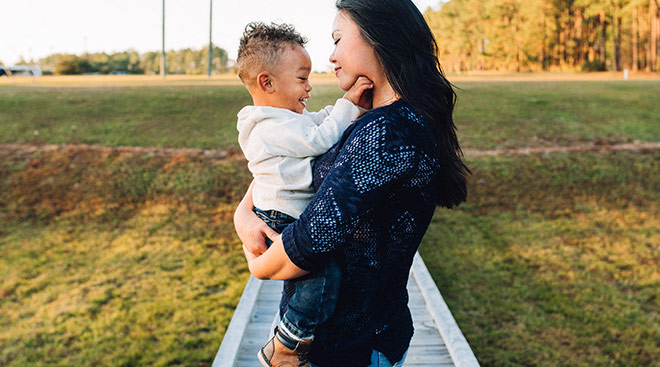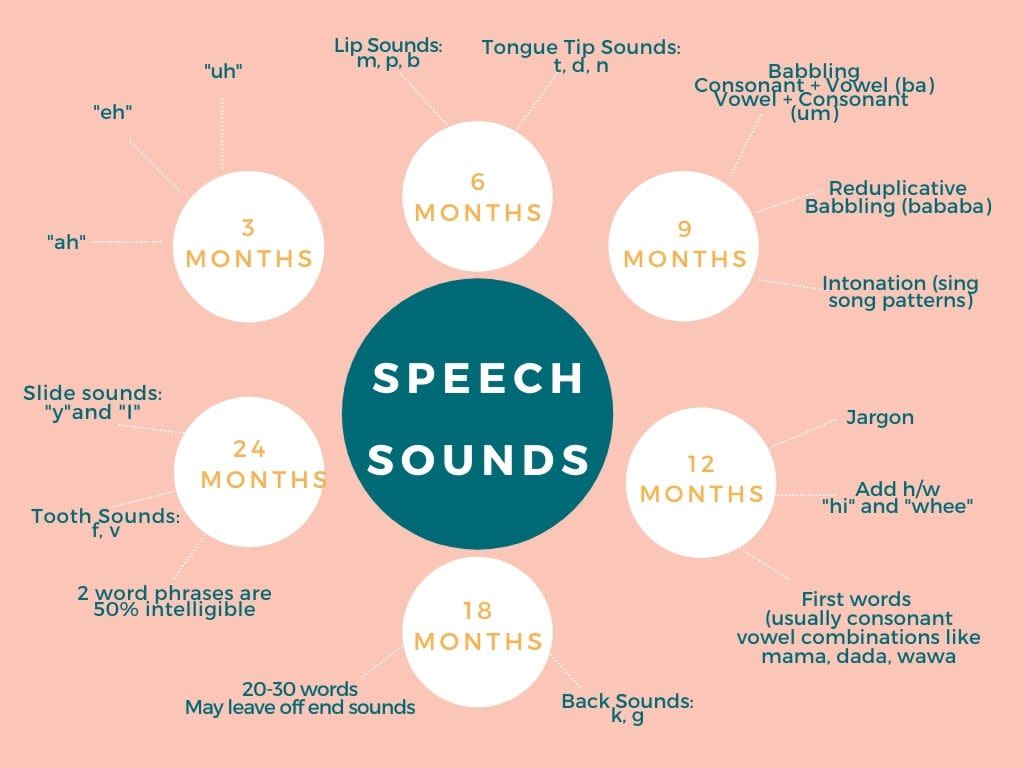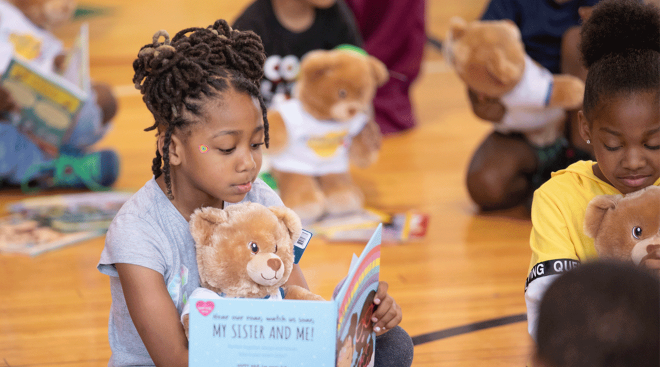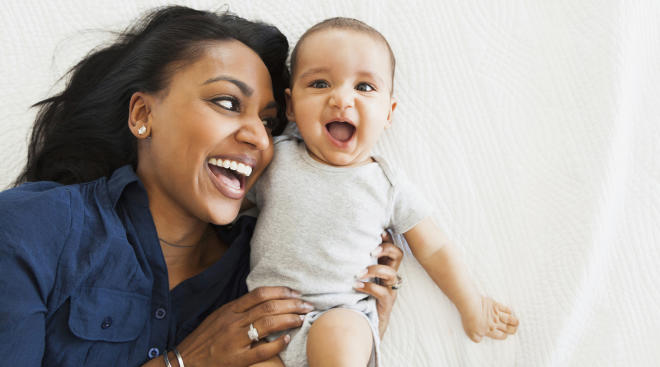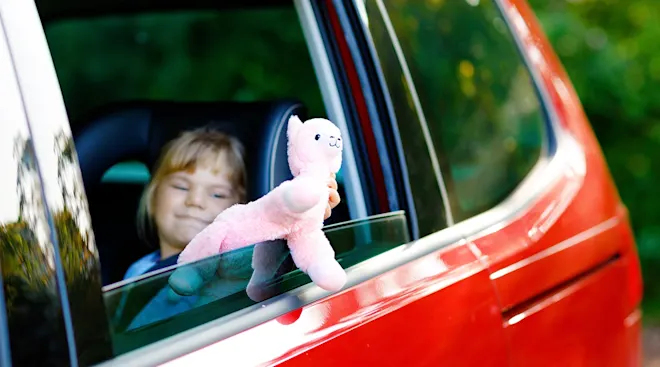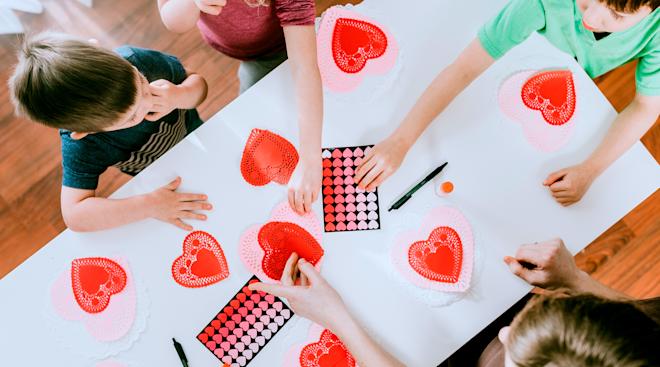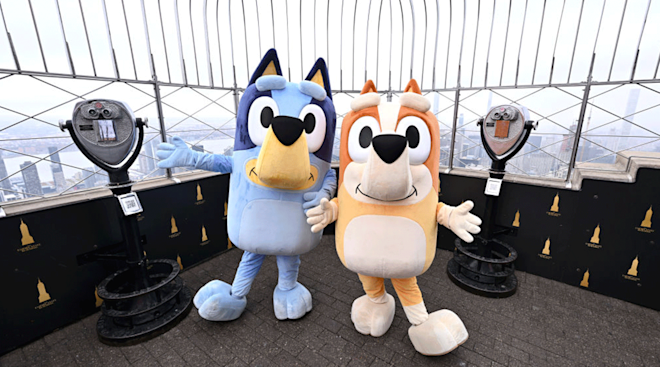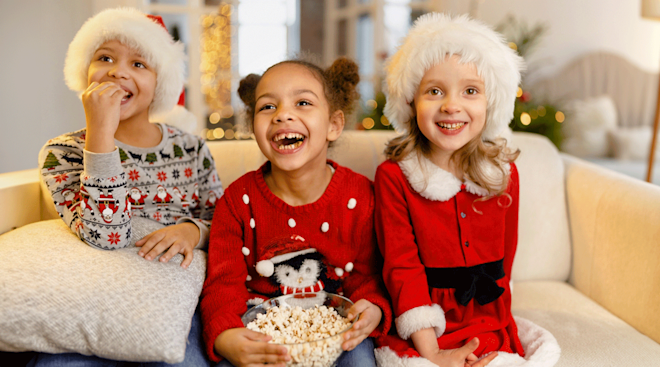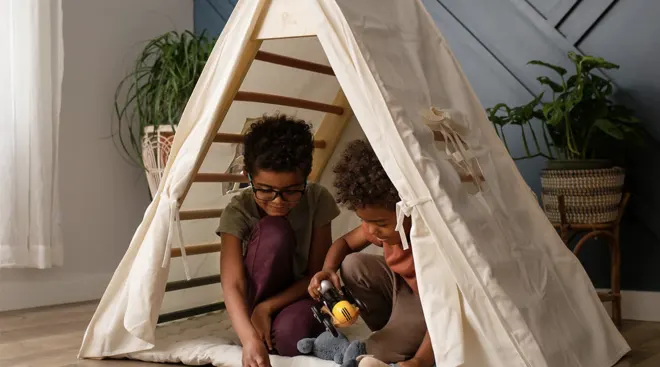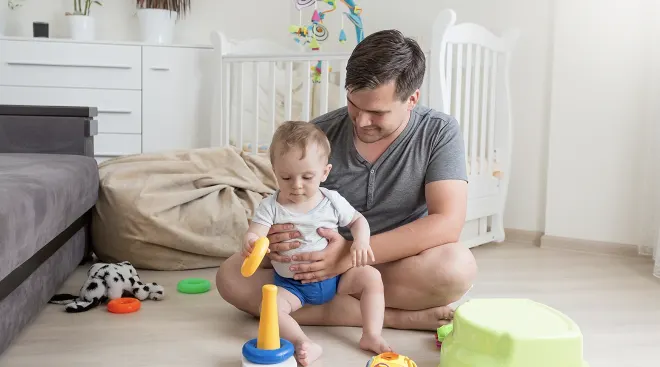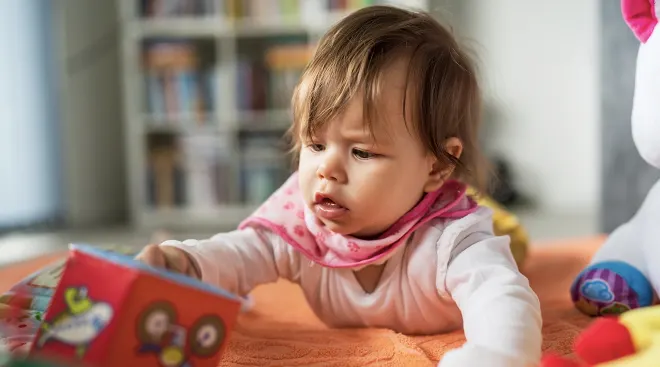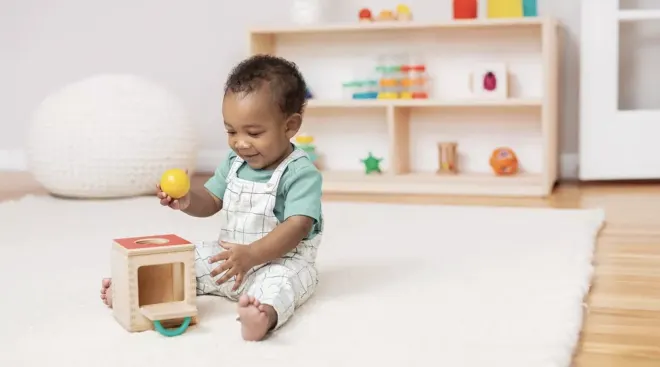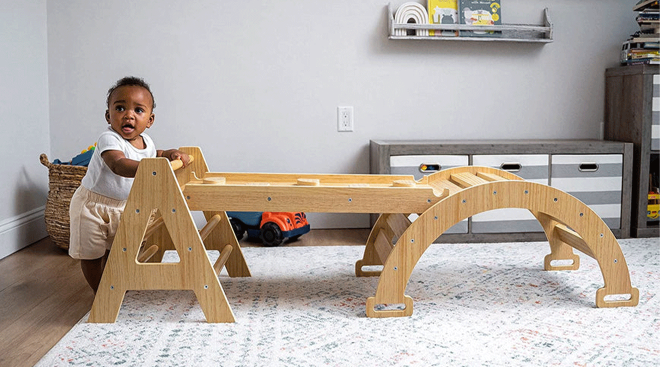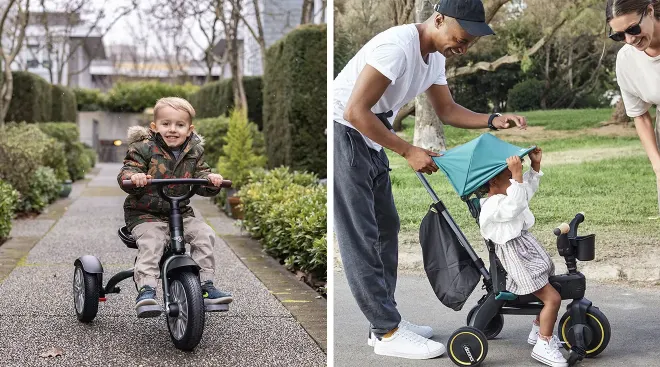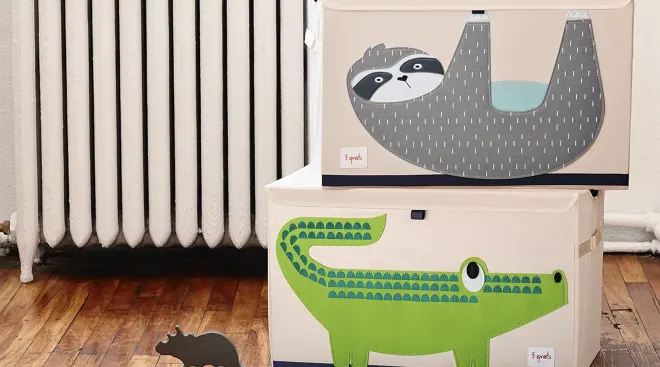How to Boost Baby’s Speech Sound Development in Their First Year
Every parent wonders when baby will say their first words and what those words will be—but don’t discount the importance of the cooing and babbling that comes first. Before getting to their first words, babies need to figure out how their mouths actually work. During the first year of life, babies begin to make a variety of sounds using their lips and tongue, which will eventually lead to first words around their first birthday. Throughout baby’s speech development, you’ll notice that development goes from the front of the mouth (sounds they can see others making and mimic) to the back of the mouth (sounds they can feel their mouth making). By understanding your baby’s speech sound development—and encouraging the formation of certain sounds along the way–you can help give them the tools they need to meet the big speech milestones.
Within the first two months, once you and baby have established a routine of eating, sleeping and diaper changes, your little one is suddenly more alert and ready to play. Beginning at around 6 to 8 weeks, babies will start to make open vowel sounds, such as “ah” and “oo,” followed by gurgling sounds in the back of their throat with “h”, “k” and “g” sounds.
How to boost baby’s speech sound development: To encourage your baby’s cooing and gurgling, turn it into a conversation and coo right back. For example, if your baby says “ah”, you say “ah” right back. As you begin to have a back and forth with your baby, you can add one more, so when your baby says “oo” you can say “oo oo”. These sound combinations will help your child as he begins to get closer to the next stage of sound development: babbling.
Baby’s eyes are finally beginning to adjust to the world, and they’re able to focus more on your mouth to see the way your lips come together. Naturally, this is when babies will start to use their lip sounds (p, b and m) and blow raspberries with their mouths. That means that around 3 to 4 months, baby is ready to start babbling with “ba ba ba” or “ma ma ma.”
How to boost baby’s speech sound development: When playing with baby, you can place a mirror nearby so they can see their own lips move together and make babbling sounds. You can also lay across from your child during tummy time to take turns blowing raspberries at each other, which will bring on the giggles from both of you. (Tip: A great book for this stage is Moo, Baa, La La La by Sandra Boynton, which has all of baby’s favorite new sounds.)
With all this focus on the mouth, it’s no surprise that baby will begin to bring toys to their mouth for exploration. This action helps the tongue learn new movement patterns, and around 5 to 6 months, your child will be producing tongue sounds such as t, d and n. With more tongue movement, there’s more space to vary pitch, and it will almost sound like baby is singing.
How to boost baby’s speech sound development: Conversations with your child become more fun at this point, because they have more sounds to use. If baby says “ba ba ba,” you can respond with different sounds, such as, “Oh, really? Ta, ta, ta.” These responses to baby’s babbling are the positive reinforcement they’re looking for to keep going.
After all this time spent developing the parts of the mouth, baby is ready to put it all together. Their consonant-vowel combinations will continue to take form (ba, da, bee, ma, mo) and they’ll begin to put two or three of these syllables together at around 6 to 7 months (eg., “ba da” or “ma mo ma”). All of those early conversations with your little one have really paid off, because now they’re beginning to imitate what you say!
How to boost baby’s speech sound development: Something amazing has also happened while all this sound play was going on: Baby is likely sitting up and beginning to explore the world around them. Now is a great time to start assigning meaning to your child’s babbles. For example, if your child is saying “ba ba ba,” you can show them a ball and ask, “Want ball?” By using simple phrases and a word containing the sound baby was just saying, you’re not only reinforcing their babbling, but also providing them with what could turn into a first word!
With all the encouragement you’re giving baby, they’re ready to start taking some risks. Around 9 months of age, your child will likely begin to use words with meaning. Using the sounds they’ve been practicing, baby may say “mama,” “dada” or “bye-bye.” Most of the time, though, baby will continue to communicate through their own language or jargon.
How to boost baby’s speech sound development: As baby begins to transition from jargon to real words, songs and music are a great tool. When you sing repetitive songs to your child, they’re able to follow along with the intonation and hear the separation of individual words. While singing songs to your little one, try leaving out a word for them to fill in. Some great songs to use at this time are Twinkle Twinkle, Wheels on the Bus and Ba Ba Black Sheep.
Finally, at or around baby’s first birthday, they’ll begin to use two to three words to name or request objects. First words are usually common objects in the environment, such as “ball,” “milk” or “dog.” Over the next few months, you’ll see baby’s vocabulary begin to explode. By 15 months, they may have around 20 words, and by 18 months your child will have more than 50 words!
How to boost baby’s speech sound development: Continue to encourage your child’s vocabulary growth by adding additional words to the conversation. If your child says “milk,” you can respond with “more milk?” or if a ball rolls away, you can say “bye ball.” By using the sounds that your little one has mastered, you’re helping them feel confident in their sound play and word choices so they continue to develop their language skills. Using simple phrases, songs with fingerplay and lots of book reading will go a long way in supporting your child’s language development.
Here’s a look at which sounds baby will likely be learning to make and when throughout their first year of life and beyond.
About the expert:
Jocelyn M. Wood, MA, CCC-SLP, is a bilingual speech language pathologist with over a decade of experience. She specializes in working with parents who are seeking advice on how to introduce speech and language activities into everyday routines. Sign up for a free toy guide at www.jocelynmwood.com or visit her on Instagram @speechwithjwo.
Please note: The Bump and the materials and information it contains are not intended to, and do not constitute, medical or other health advice or diagnosis and should not be used as such. You should always consult with a qualified physician or health professional about your specific circumstances.
Plus, more from The Bump:
Navigate forward to interact with the calendar and select a date. Press the question mark key to get the keyboard shortcuts for changing dates.
































